10 Garage Safety Rules to Follow, Or Else...
You’re bright enough to take matters into your own hands and wrench on your own ride, but don’t be a doofus and do all of this without taking the right sort of safety precautions at the expense of an eyeball or a limb.
Behold, the top ten safety rules you ought to be following already, in no particular order:
1. The Workspace
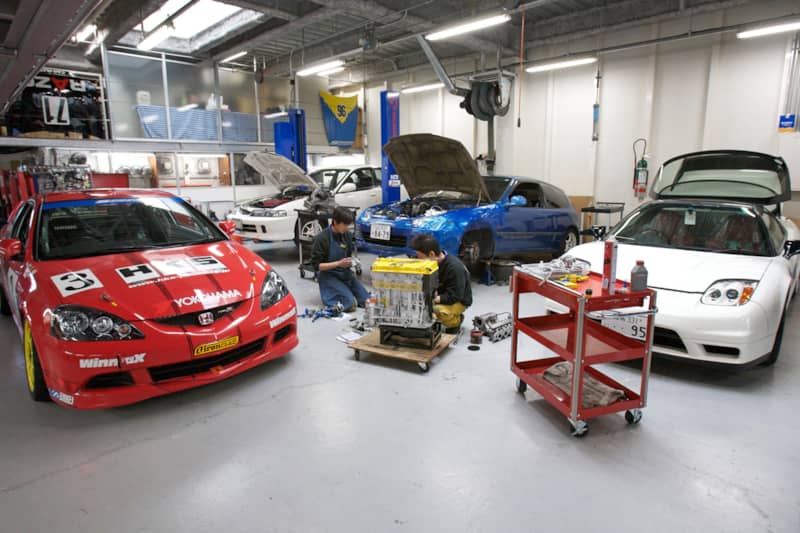
The difference between you getting that clutch installed or you being carried out of your garage on a stretcher often comes down to your workspace. Prepare your work area before getting started. And by prepare, we mean clearing some space around your car by pushing the weight bench you never use out of the way along with your 14-year-old’s crib that you haven’t got around to slanging on Craigslist. An uncluttered work area means the chances of you not tripping, slipping or fumbling around just got a whole lot better. Adequate lighting and ventilation can also keep you from bungling things up.
2. The Jack
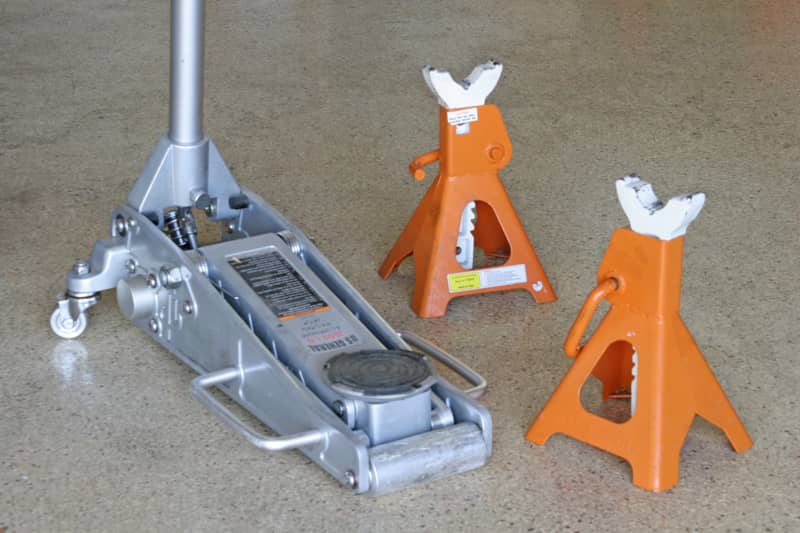
Chances are, you’ll be raising whatever it is you’ll be working on off of the ground. Raise your ride from the wrong spot, though, and you’re likely to bend up all sorts of important pieces of sheetmetal or gash up a radiator. Consult your car’s owner’s manual for determining its jack points, which are often located along a crossmember up front, along the pinch welds underneath the doors or at a tow-hook. Before doing any of this, though, be sure that your jack isn’t leaking any of its hydraulic fluid and that it’s in good working order.
3. The Jack Stands
You’ve raised whatever it is you plan on working on off the ground but you aren’t done yet. Your floor jack was designed to lift and lower your whip—not to support the brunt of its wait for hours on end and be the only safeguard between your face and your Civic’s underside. That’s what jack stands are for, and are exactly what you should place underneath in at least two different spots. In most cases, jack stands should be positioned in the front or rear at the designated jack points along the chassis’ pinch welds. It’s almost never a good idea to support a car entirely by jack stands. Leaving a pair of tires on the ground at the opposite end you’ll be working on can increase stability a whole lot.
4. Chocking the Tires
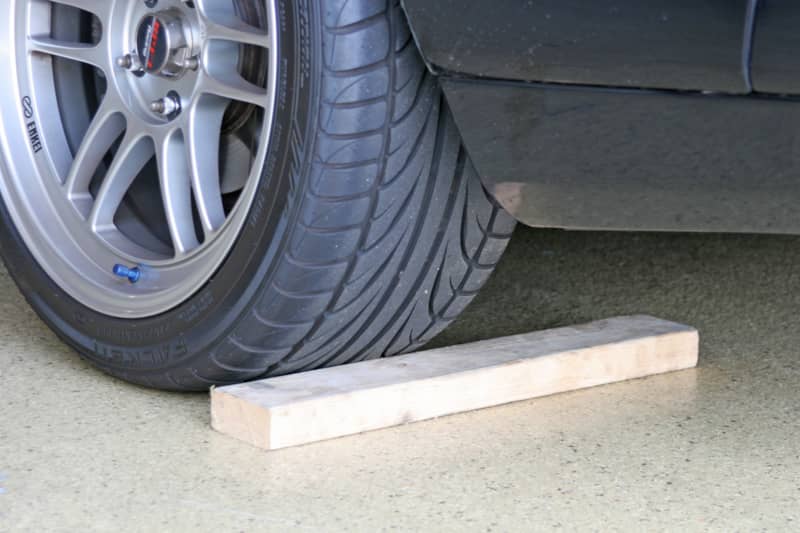
You’re smart enough to put your transmission in gear or in Park and yank up the emergency brake lever before raising your whip off of the ground, but chocking its tires is just as important. Use dedicated rubber wheel chocks or a section of 2x4 lumber to keep the car from rolling around once it’s in the air. If you’ll be raising the rear, chock the front tires just as you would the back.
5. Fluids and Fumes
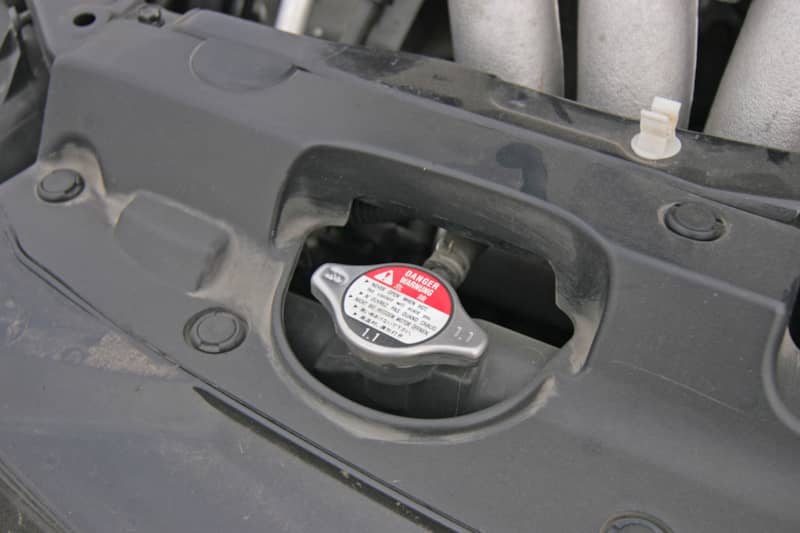
Your engine bay is filled with all sorts of fluids—most of which can do ugly things to your face, some of which are flammable and a few that’ll cost you your eyesight. Disposing of any of them the wrong way can also get you into trouble. Instead of, say, dumping whatever coolant you’ve drained from your radiator into your neighbor’s bushes, stash it in a sealed container and drop it off at any hazardous waste collection site, like your local auto parts store. It’ll also do you good to use a bit of care when cracking open anything that’s under any kind of pressure, like cooling or fuel systems. Here, allow the engine to cool down and follow whatever instructions the manufacturer’s come up with for safely relieving those contents’ pressure. Be sure that running water and hand towels are also close by for when your forehead gets mucked up with gear oil from underneath. Finally, never fire up an engine without plenty of ventilation, whether you’re diagnosing the initial problem or checking to make sure whatever it is you’ve fixed is gonna work out.
6. The Toolbox
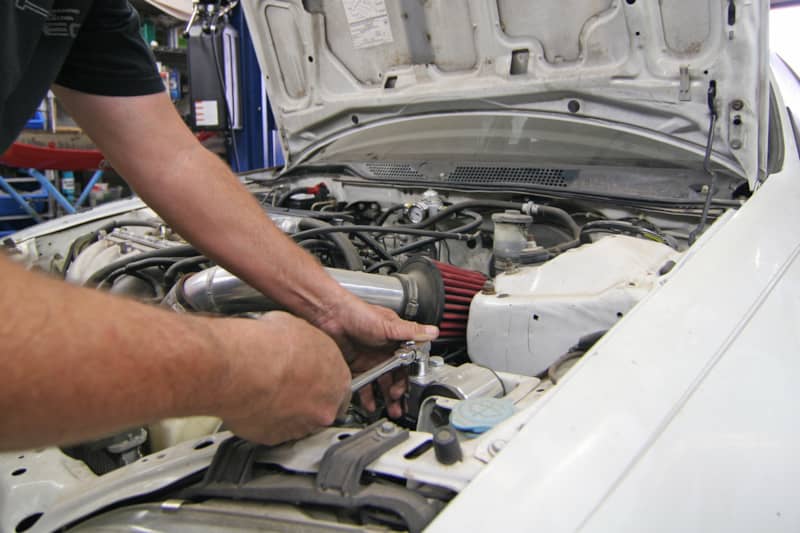
Properly using whatever tools you’ve got is about as important as how good those tools are to begin with. Chuck any rounded-up sockets or malfunctioning ratchets to the side, and remember to, whenever possible, rotate the wrench or ratchet toward you for better control. And for stubborn hardware that hasn’t been touched since General Motors put your hooptie together back in 1986, reach for six-point sockets as opposed to 12-point ones for even better grip, if possible.
7. Heavy Lifting
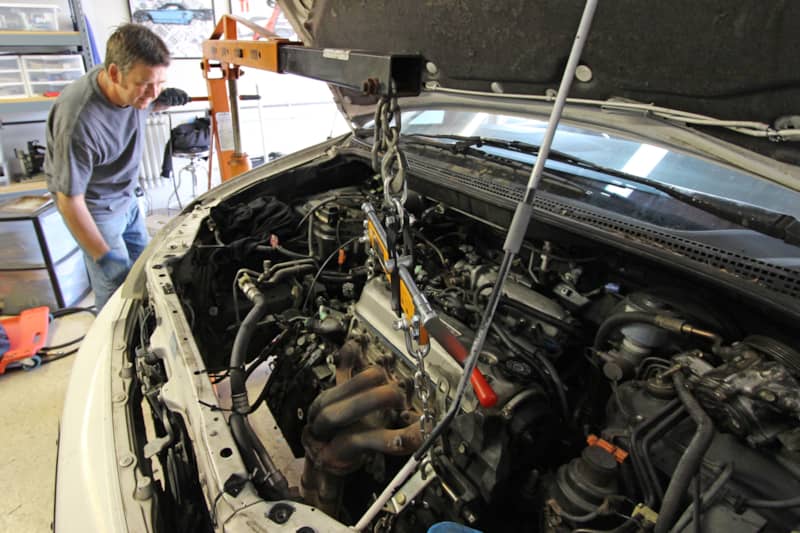
The days of you tipping a longblock onto its side and sliding it underneath your front bumper into the engine bay should’ve passed around the same time you realized that being towed behind a minivan on a pair of Taco Bell trays was a bad idea. You’ll want an engine hoist to yank that engine and trans out and back into place and, like the floor jack, you’ll want to inspect it before using it for any kind of hydraulic fluid leaks. Be sure that’s it’s capable if lifting the sort of weight you plan on handling and check for clearance against things like your car’s hood, front bumper, and tires before trying to finagle it into place with 800 lbs worth of metal dangling from it. Finally, hook up the hoist to your engine and gearbox using the largest-diameter bolts the chain will allow for; mount the chain up high on the engine to keep it stable when raising it up, too.
8. Your Gear
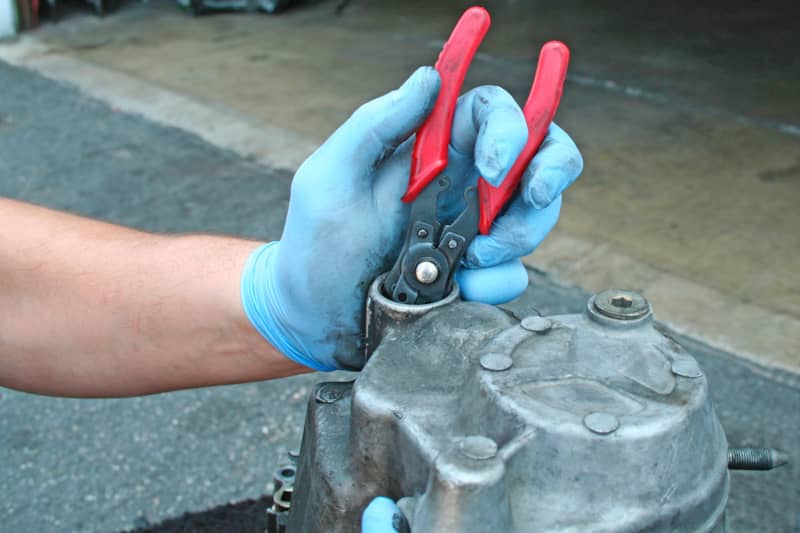
Somewhere in that toolbox of yours you ought to have a pile full of disposable gloves, some safety glasses and hearing protection if you’ll be doing something like laying next to a running air compressor all day. Things like snug-fitting clothes and hard-toed shoes you’ll also be thankful for and’ll keep you from getting caught up in a spinning fan belt or save your big toe when you drop your starter on it.
9. When Bad Things Happen
You already know that smoking anyplace near your engine bay is a bonehead move. Still, having a fire extinguisher nearby that’s capable of dousing flames caused by oil, gas or electrical drama will never be a bad idea. Also, learning how to use a fire extinguisher now makes a whole lot more sense than doing so when your interior’s about to go up into flames.
10. Your Brain
As it turns out, what’s in between your ears is likely your best defense against anything having to do with things like stitches and lost limbs. The better you plan out your project—which includes your workspace, tools and equipment—the better your chances of you escaping all of this alive and that timing belt you just installed actually doing what it’s supposed to.







